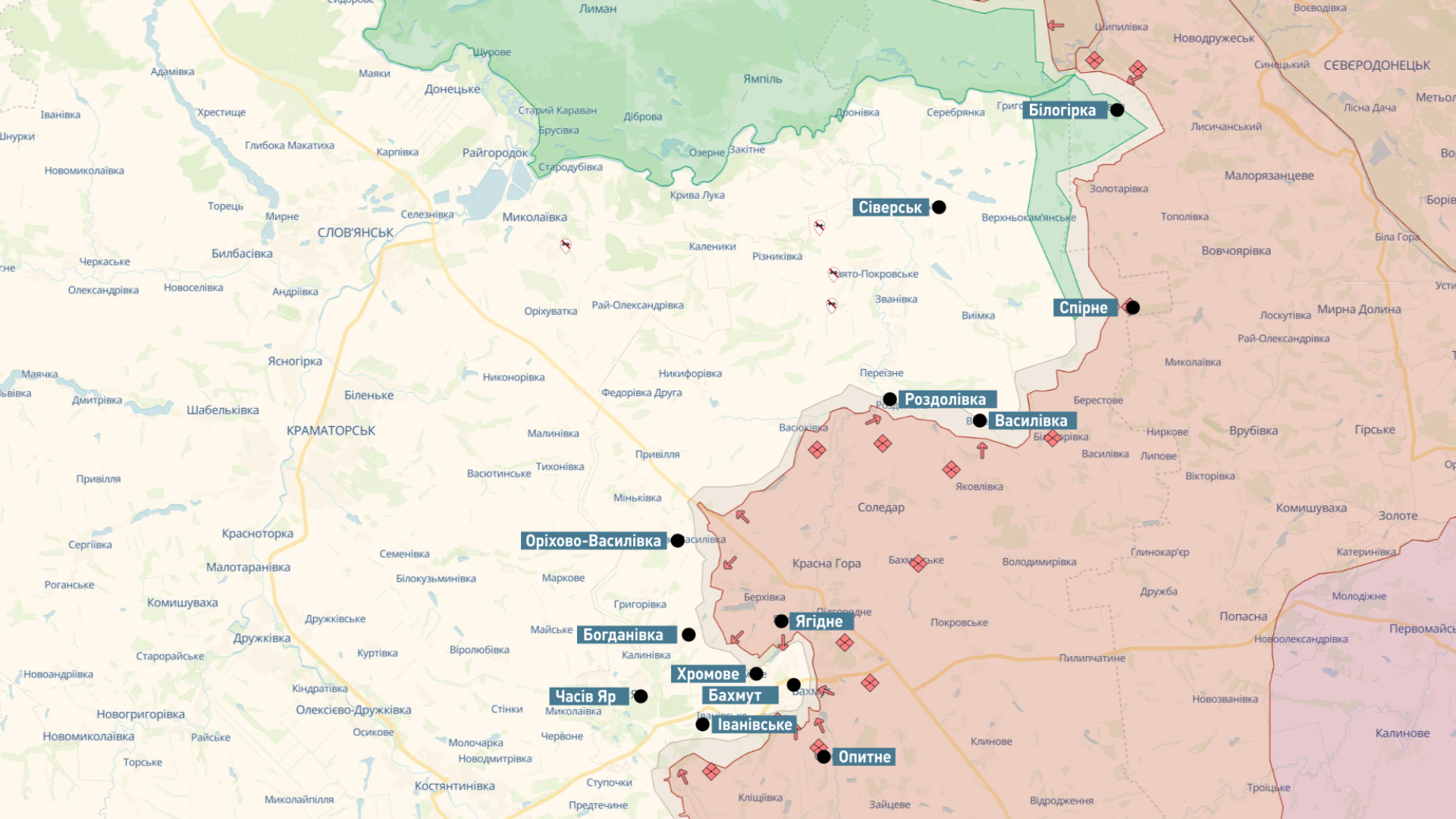
Russian forces near Bakhmut plan to deploy northwards - military expert Serhiy Zgurets
Russians near Bakhmut seek to deploy to the north and surround Ukrainian troops in the Siversk region
Bakhmut direction situation
Since the end of February, an offensive by the enemy has been ongoing with the goal of reaching the administrative borders of the Donetsk and Luhansk regions. The offensive is taking place in six primary directions: Kupiansk, Lyman, Bakhmut, Marinka, Avdiivka, and Vuhledar (Shakhtarsk). With the exception of Bakhmut direcion, where the enemy is attempting to surround the city from both the north and south, and launching frontal attacks from the east, there has been no significant advancement.

Our troops are currently maintaining and rotating supply lines to defend Bakhmut, despite facing significant challenges. It is suspected that the enemy forces near Bakhmut plan to move northwards and turn their attention to covering Ukrainian troops stationed in the Siversk region. To achieve this goal, the enemy needs to coordinate efforts with other areas such as Svatove and Kreminna, where hostilities are ongoing, and Russia is amassing troops. However, their success depends on their strength and resources. The enemy is also focusing its efforts on the Kharkiv region borders, with the General Staff set to supporting our military in this area.
Kupiansk district and Svatove - Kreminna section situation
Yuriy Fedorenko, commander of the 92nd separate mechanized brigade, reports that the Russians have been actively assaulting for a month but with little success, suffering significant losses. Ukrainian Armed Forces are conducting an effective counter-battery fight. The 92nd brigade discovered a Russian ammunition warehouse and hit it with artillery, eliminating personnel and equipment. Ukrainian artillery and intelligence are actively working to eliminate enemy tanks and lightly armored vehicles. The intensity of artillery and MLRS has decreased. The enemy chaotically attacks settlements but has no success, and the initiative is on the side of the Ukrainian Armed Forces. Periodically, Kupiansk is shelled by S-300s and “Uragans”. Rains have caused issues with crossroads for both sides, but the Ukrainian Armed Forces have prepared positions for a sectoral counteroffensive once the weather stabilizes. Infantry is used in wooded areas, while Russians advance under armored vehicles on asphalt. The Russian Federation sent troops to detect fire equipment and get as close as possible to Armed Forces positions, but most of these groups were defeated sectorally along the entire contact line. The Armed Forces effectively work with intelligence and have eliminated many potential assaults in advance. The advantage remains with the Ukrainian Armed Forces, and success will depend on the amount of incoming ammunition and firearms, which will help knock out the enemy from occupied positions and prepare for a counterattack. The Russian Federation actively uses planes and attack helicopters where our air defense is not efficient. Russian equipment and pilots are avoided in areas where they have been shot down before. More air defense means less Russian aviation and strike ability. The Russian Federation has more artillery and ammunition, but parity is achieved through professional gunners and aerial reconnaissance. Unnecessary ammunition usage is avoided. In some directions, full parity is achieved, but not in others due to the high concentration of enemy artillery. A part of our brigade pushed the Russians out of their positions on March 11 and continued the counteroffensive on March 12. Ukrainian forces are working around the clock at 120% of their capacity.
Prospects of re-equipment AFU Air Force with new weapons
Our MiG-29 and Su-27 primarily use weapons of USSR origin, but we have also employed foreign weapons, such as HARM missiles and anti-aircraft barrage bombs, to successfully destroy important enemy targets. There are reports that the USA is equipping our MiG-29 with AIM-120 air-to-air missiles, which has led to optimistic expectations about the potential success of our planes. However, after consulting with factory representatives who are knowledgeable about these missiles, it is clear that a more rational approach to re-equipment is necessary.
According to aviation expert Valerii Romanenko, re-equipping Ukrainian fighters with the AIM-120 missile is impossible due to fundamental differences in guidance systems between the AIM-120 and the Ukrainian R-27 missile. The Ukrainian R-27 missile uses semi-active radar guidance, while the AIM-120 has its own navigation system and is launched based on radar calculations by the fighter aircraft. The Ukrainian radar is unable to guide the missile continuously and is only used to illuminate the target until the missile's homing head is activated. The American system does not require continuous radar guidance unless the target is maneuvering, in which case new coordinates are provided. The closed architecture of the control system in MiG-29 and Su-27 aircraft cannot be supplemented with a non-Russian or non-Soviet model, requiring a bypass channel to guide the missile solely based on radar data. However, there is typically no room for this on fighter jets. As a result, using the AIM-120 missile is limited to 15-20% of its full capabilities, similar to the HARM. If the target does not maneuver, it can be hit, but if it does, a missile worth $500,000 will be wasted. Obtaining an AIM-120 missile will not change the situation as our radars have limited range and full guidance is impossible. The only solution is to receive brigades of new fighters to intercept cruise missiles, fight Russian aircraft, and suppress their defense during our offensive. Alternatively, we need to acquire long-range weapons. With thermal missiles, it is easier: the infrared head has captured the target and the torch is directed from the engine. We must develop radars for our planes, retrain pilots, and transfer fourth-generation fighters to perform tasks on the battlefield for effective integration of Western missiles. This process will take at least a year and a half.
- News













































